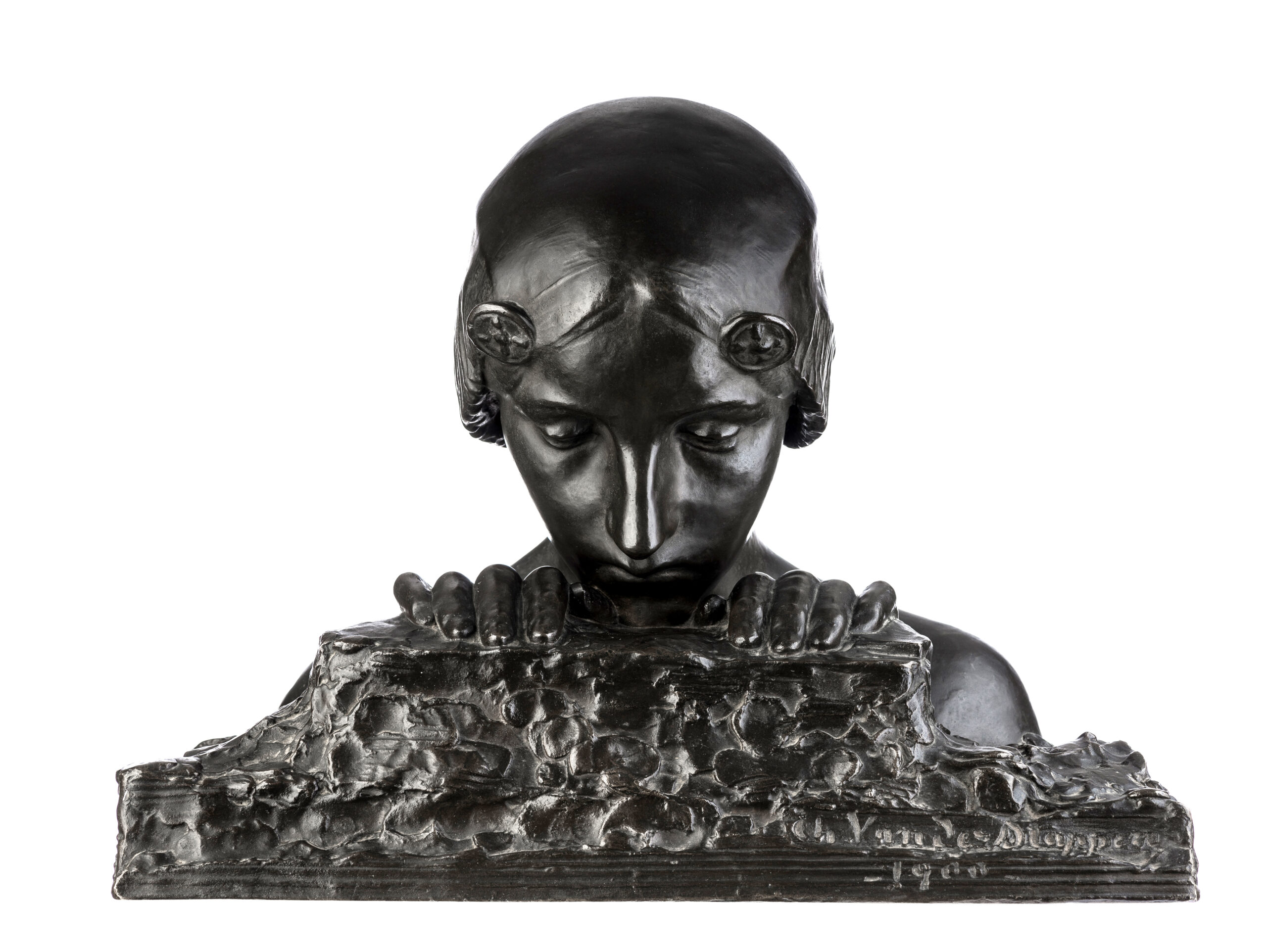LE TRESOR CACHE BY CHARLES VAN DER STAPPEN
Description : The sculpture by Charles van der Stappen shows a woman coming out of the water, her hands resting on a stone in front of her, her gaze impassive and neutral, her face overhanging the stone and her hands. Its head is covered with a cap equipped on either side with a disc that can be compared to a button. The cap is smooth on top and ribbed at the edges. This symbolist sculpture leaves room for suggestion, it is free to be interpreted. Some will see it as a nymph of water, others as an opposition between darkness and light.
The Belgian sculptor Charles Van Der Stappen (1843 – 1910)
Charles Van Der Stappen (1843 – 1910), an artist who faced early financial struggles, exhibited remarkable artistic talent and pursued a risky career in art. Balancing work and education, he attended evening classes at the Brussels Academy, mentored by Jean Portaels, which led to him graduating with honors in 1868. Engaging in the Portaels workshop, he collaborated with peers like Meunier and Lemmonier, contributing to his artistic development. A cultured individual interested in various disciplines, he associated with prominent artists like Camille Lemonnier and Constantin Meunier, forming close friendships. He traveled extensively to perfect his craft, exploring museums and salons, and achieved recognition through exhibitions. Holding a pivotal role in the Brussels art scene, he passed away in 1910, having left a lasting impact on the field.
Foundry : the sculpture is signed « Ch. Vanderstappen – 1900 » corresponding to Charles Van Der Stappen, the Belgian sculptor. A foundry stamp « A. VAN AERSCHODT » corresponding to the Belgian foundry Van Aerschodt.
Material : bronze made by lost-wax technique and has a dark brown patina.
Height : 36,5 cm.
Width: 46,5 cm.
Depth: 28,5 cm.
